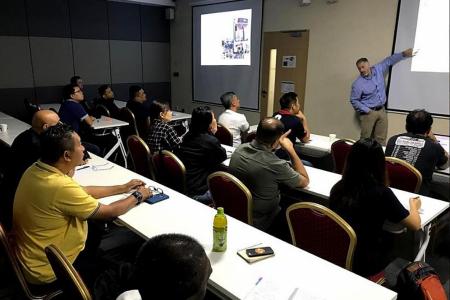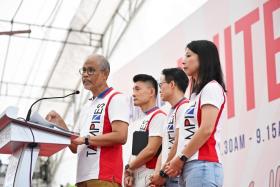Terrorists using social media to gather intelligence
Internet more than just a platform for recruitment, radicalisation
When planning to launch a rocket from Batam to attack Marina Bay last year, Indonesian terror group KGR@Katibah GR acquired information on how to assemble firearms and explosives through Facebook.
Their plans were foiled, but terrorists continue to use social media and the Internet to acquire knowledge and gather and share information.
Mr Ivor Terret, 44, a counter-terrorism expert from Certified Counter Terrorism Practitioner (CCTP), said: "Terrorists are leveraging on the openness and inter-connectivity of the Internet and social media to gather crucial information while remaining anonymous."
He was speaking to The New Paper at CCTP's Hostile Reconnaissance and Surveillance Detection Course, which taught participants how to identify and disrupt intelligence gathering by terrorists.
It is targeted at security professionals and part of a series of counter-terrorism courses and workshops organised by CCTP this and next month.
CCTP is a terrorism prevention, detection and deterrence programme started in 2007 by 12 counter-terrorism and security experts from different countries.
While much has been discussed on how terrorists use social media for recruitment and radicalisation, it is a lesser-known fact that social media platforms are also used by them to gather and share intelligence.
Mr Raj Joshua Thomas, 38, president of the Security Association of Singapore, said: "Social media users get so caught up with the culture of sharing everything online that they fail to realise the potential security risks.
"Even a status update with a location tag may be nuggets of information for terrorists to exploit."
Mr Remy Mahzam, 29, an associate research fellow at the International Centre for Political Violence and Terrorism Research, said social media is a crucial platform for terrorists to plan attacks and exchange information on bomb-making manuals and trade craft.
DISCRETION
The experts emphasised the need for the public to exercise discretion when uploading social media posts and accepting friend requests.
Mr Terret said: "Terrorists can create fake profiles to befriend social media users and gain access to their personal information to identify and recruit people susceptible to radicalisation."
But experts said physical surveillance is still the main method of intelligence gathering for terrorists.
In 1997, a Jemaah Islamiyah member filmed Yishun MRT station as part of a plan to bomb targets there. The reconnaissance was sent to a senior Al-Qaeda leader in Afghanistan in 1999.
Under the Infrastructure Protection Bill 2017, more powers have been granted to security personnel at military camps and critical infrastructure.
They can question suspicious people, inspect their belongings and make them leave. They can also stop unauthorised photography and videography of these areas, and can examine and delete the footage.
The measures are part of the Ministry of Home Affairs' counter-terrorism strategy.
Mr Terret said: "Members of the public should always be aware of their surroundings and shouldn't hesitate to contact authorities if they see someone acting suspiciously."
Get The New Paper on your phone with the free TNP app. Download from the Apple App Store or Google Play Store now


